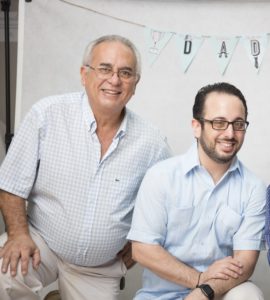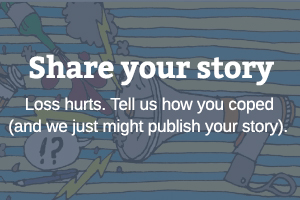
While our loved ones are living, we often underestimate how intertwined they may be in our digital devices and platforms. These days, we have them in our car, on our phones, in social media, through multiple chat platforms. With a flick and a touch, we can reach them through multiple ways. Yet when the music stops, that digital convenience takes a toll of its own.
In our case, it happened when our father died. It was sudden and it all went down in a three-day span. The immediate aftermath was focused on the obvious next steps: funeral services, financial matters, and government records. In fact, those were precisely the same steps that we followed not less than a month before when our grandmother passed away (in what was a much more expected and peaceful death).
When the dust briefly settled a week or so after the funeral service, the second burial came into the light: the digital one.
It started with my car’s dashboard. Every time my phone connected to the dashboard; his face would show up as one of my eight favorite contacts. With every ride, there he was, on my dashboard. The only way to remove him was to manually delete him. Of course, the process of removing him from the dashboard wasn’t a quick swipe, but rather the few purposeful steps during which each one makes you confirm that you are, in fact, deleting him. Pressing that delete button hit hard, as though the first time we said goodbye wasn’t enough. And soon enough, I realized this was one of several experiences I’d have to replicate.
Next came my phone. Apple (like most smartphones) places your Favorites as the first screen when you hit the phone icon. My father (and his picture) was top three on the Favorites list. Every time I reached to make any call, there he was. Again: “Are you sure you want to remove Rafael from your Favorites?” (In my head, it was more like…”are you sure?”)

Jean Vidal and his father, Rafael
Of course I wasn’t sure and of course I didn’t want to. But that number was no longer going to be picked up.
I hadn’t yet successfully traversed the post-death digital landscape. A mere couple of years ago, removing a number from your phone may have sufficed to remove that person from your mobile device. No longer: I had to tackle the group chats and text messages.
In each, I was the administrator, leaving the deletion/removal to me. Having to read “Jean has removed Rafael from the chat” over and over again felt almost like a betrayal. I wasn’t setting him aside from us, that had already happened. But without that, his number and face would keep appearing in the group icon, reminding us that he wasn’t there and would not be responding.
After a couple of weeks, the digital landscape was addressed, but social media continues to be its own minefield. My father had Instagram and Facebook (with the latter having two confusing identical accounts, after all, you can’t be a digital boomer without at least two identical accounts), and with that came the debate as to whether or not to leave them as a memorial or delete them and avoid the “On this Day” reminders that the algorithms serve. In the end, we left them intact, allowing us to peek in, see the posts that were left up for him never to see, but for us to remember.
Eventually that profile will no longer be online, and that may well be the last burial.
The process of removing him from the dashboard wasn’t a quick swipe, but rather the few purposeful steps during which each one makes you confirm that you are, in fact, deleting him. Pressing that delete button hit hard, as though the first time we said goodbye wasn’t enough.
The timing was another stinging aspect. I couldn’t rush to do this after his death. It would feel as though I couldn’t wait to erase him. But the longer I delayed, the more the ever-reaching digital extensions of our lives reminded me of how close he was, and how far away at the same time.
The work isn’t finished yet. As I scroll through my contacts, he’s still there. Not in my Favorites, but still in my phone book. Our message history lives in my iMessage application, preserving the conversations we had, the pictures he would send of my kids at his house. It is a reminder and piece of him I still hold onto tightly. Digitally, I’m just not ready to bury that part of him on my phone.
We invest so much time in connecting our loved ones to our digital devices. Having them at a finger’s swipe makes them closer, more accessible. Yet, when the day comes, it becomes a series of individually gut-wrenching mini burials. With each deletion or removal becoming its own event, its own prompts. Precisely what keeps them so close during their lives, is what prolongs the goodbye once they are gone.
Jean Vidal is an attorney out of Puerto Rico by day, and corraler of two kids by night.








